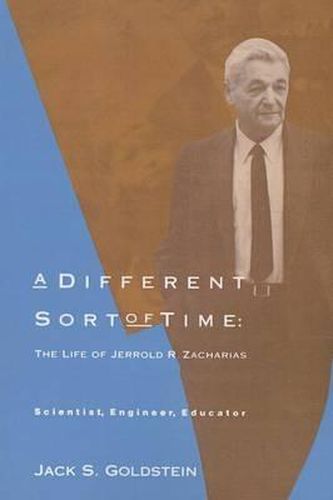Readings Newsletter
Become a Readings Member to make your shopping experience even easier.
Sign in or sign up for free!
You’re not far away from qualifying for FREE standard shipping within Australia
You’ve qualified for FREE standard shipping within Australia
The cart is loading…






In a clear, nontechnical account, Jack Goldstein tells the story of this entrepreneurial American scientist who played an essential part in experiments important to the development of quantum mechanics, who later became an advisor to the government during much of the Cold War period, and whose leadership in educational reform resulted in the restructuring of the entire American high school science curriculum.
Jerrold Zacharias (1905-1986) was a physicist well placed by historical circumstance to take a central part in the development of American science, science policy, and science education. In a clear, nontechnical account, Jack Goldstein tells the story of this entrepreneurial American scientist who played an essential part in experiments important to the development of quantum mechanics, who later became an advisor to the government during much of the Cold War period, and whose leadership in educational reform resulted in the restructuring of the entire American high school science curriculum. Zacharias lived at a time when an individual with imagination and courage could make a difference, whether at the forefront of science or in matters of public policy. He believed that every citizen, even those with modest scientific sophistication and knowledge, could learn to think like a scientist. Now, at a time when the issues of science education and science literacy are again of compelling national interest, his ideas merit close attention.Goldstein describes Zacharias’s coming of scientific age in the early 1930s, as a member of 1. 1. Rabi’s group at Columbia, and examines the leading role he played during World War II at MIT’s Radiation Laboratory and at the Manhattan Project. From about 1955 on, Goldstein observes, Zacharias made significant contributions to science education in physics, chemistry, biology, and mathematics at the primary, secondary, and college levels. As a result of his initiatives, science and mathematics curriculum development flourished in a number of third-world countries.
$9.00 standard shipping within Australia
FREE standard shipping within Australia for orders over $100.00
Express & International shipping calculated at checkout
In a clear, nontechnical account, Jack Goldstein tells the story of this entrepreneurial American scientist who played an essential part in experiments important to the development of quantum mechanics, who later became an advisor to the government during much of the Cold War period, and whose leadership in educational reform resulted in the restructuring of the entire American high school science curriculum.
Jerrold Zacharias (1905-1986) was a physicist well placed by historical circumstance to take a central part in the development of American science, science policy, and science education. In a clear, nontechnical account, Jack Goldstein tells the story of this entrepreneurial American scientist who played an essential part in experiments important to the development of quantum mechanics, who later became an advisor to the government during much of the Cold War period, and whose leadership in educational reform resulted in the restructuring of the entire American high school science curriculum. Zacharias lived at a time when an individual with imagination and courage could make a difference, whether at the forefront of science or in matters of public policy. He believed that every citizen, even those with modest scientific sophistication and knowledge, could learn to think like a scientist. Now, at a time when the issues of science education and science literacy are again of compelling national interest, his ideas merit close attention.Goldstein describes Zacharias’s coming of scientific age in the early 1930s, as a member of 1. 1. Rabi’s group at Columbia, and examines the leading role he played during World War II at MIT’s Radiation Laboratory and at the Manhattan Project. From about 1955 on, Goldstein observes, Zacharias made significant contributions to science education in physics, chemistry, biology, and mathematics at the primary, secondary, and college levels. As a result of his initiatives, science and mathematics curriculum development flourished in a number of third-world countries.